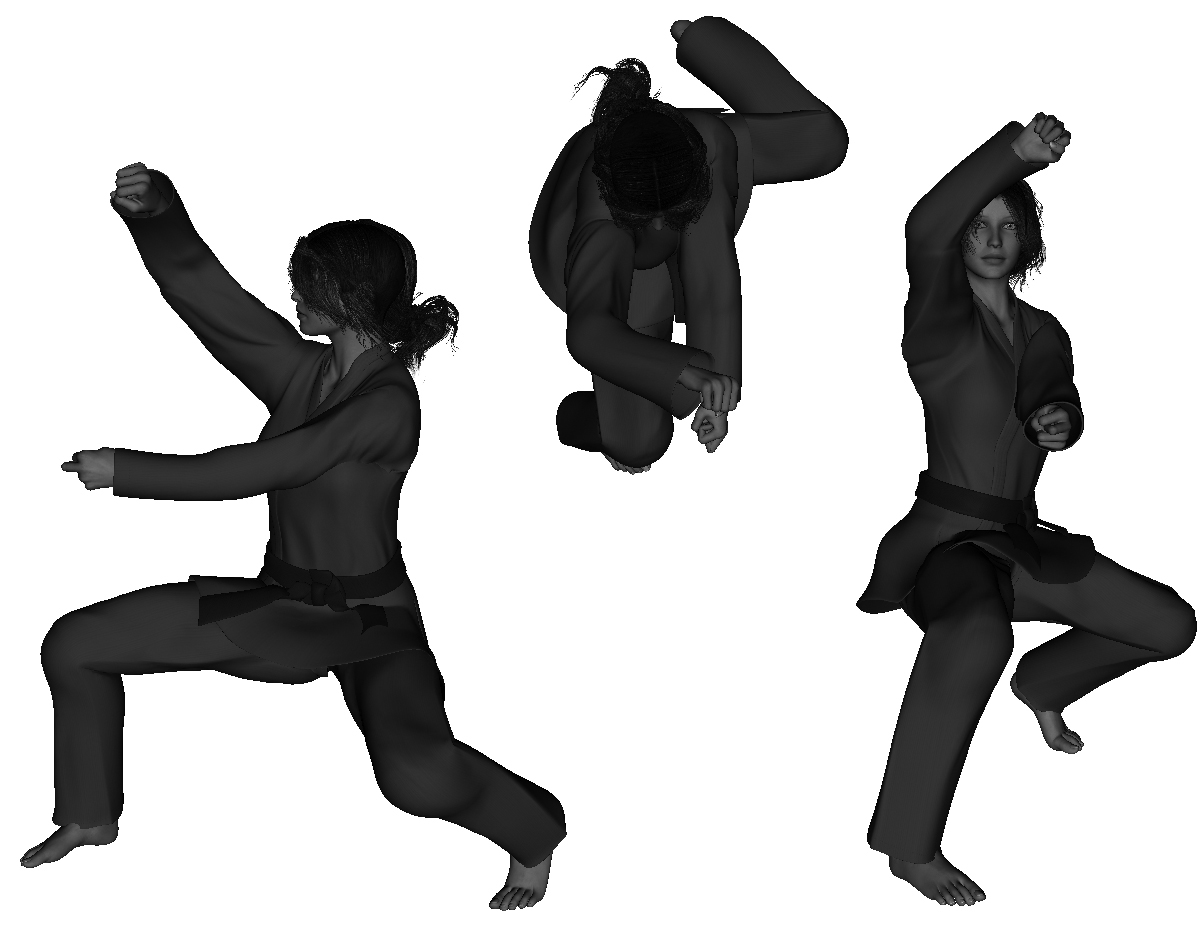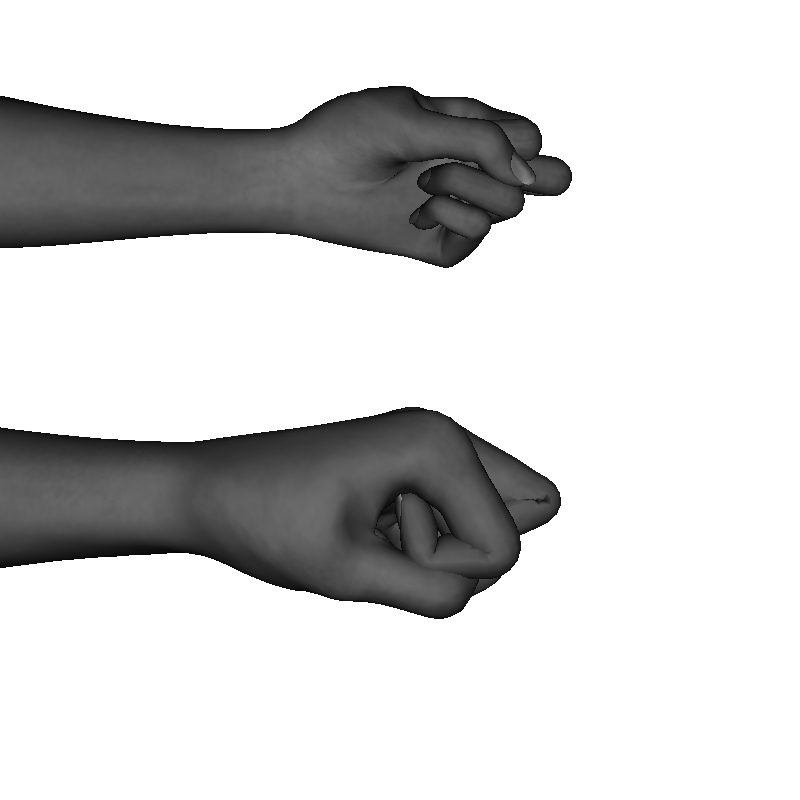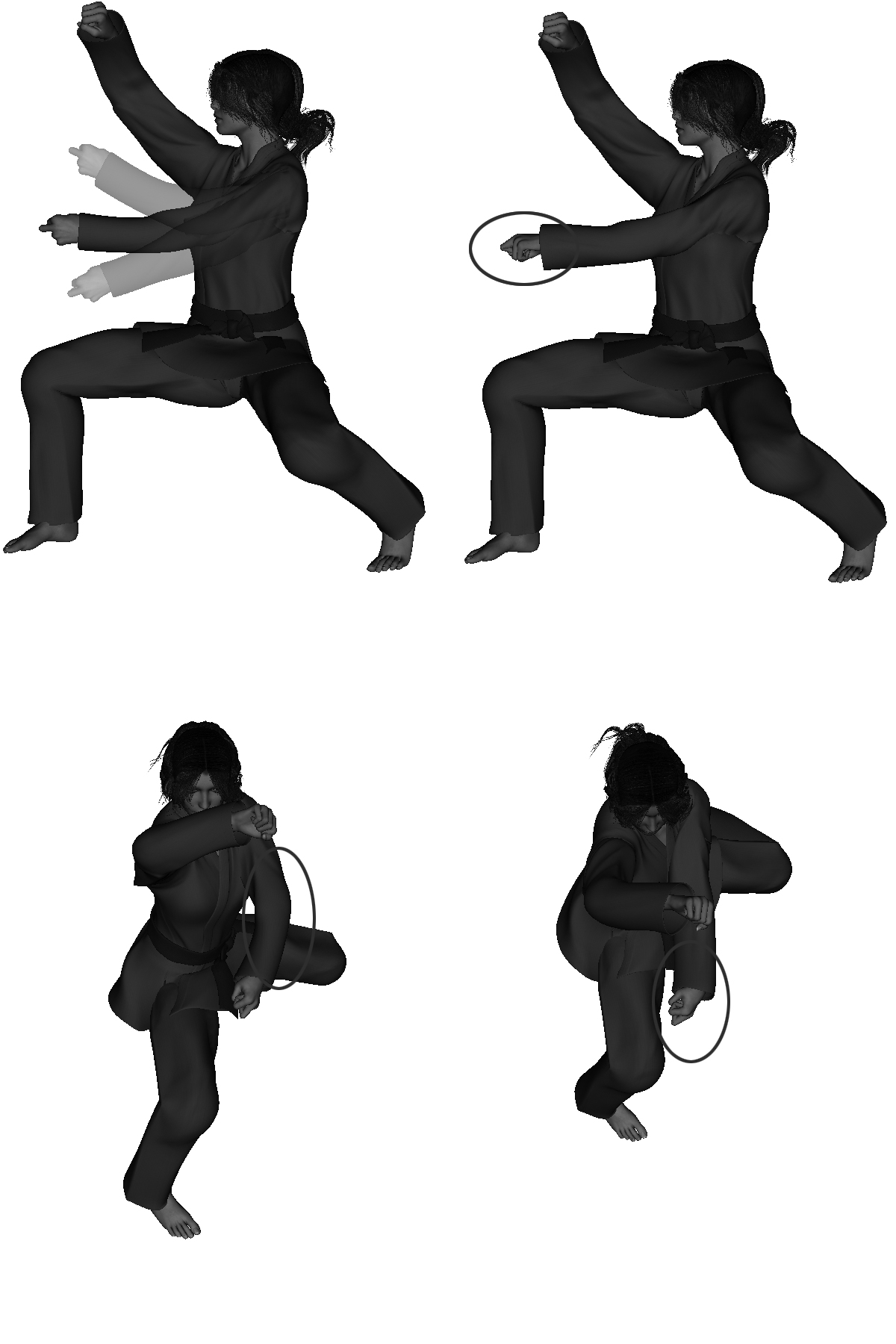| 1) | height - parallel to floor (maximum downward travel point) |
| 2) | depth - directly below Upper Block extension |
| 1) | hand - vertical (palm perpendicular to ground) |
| 2) | wrist kept straight (not bent up / down and / or side-to-side) |
| 3) | elbow directly in-line with fist (horizontally) |
| 5) | upper body / hips - Wide Kneel rotation |
| 6) | legs / feet - Wide Kneel rotation |
| iii) | Point of Contact - middle finger middle-knuckle |
| b) | proper formation - weapon (hand): |
| 1) | bent like standard fist - except extended middle-knuckle (bent at middle knuckle) |
| 2) | kept together (compact unit) |
| 1) | wrapped around bottom of fingers to support middle-knuckle (compact unit) |
| i) | proper Method of Execution - Snapping |
| ii) | improper execution - not at proper speeds / methods: |
| 1) | executed too slow (transforms into push - not snap) |
| 2) | executed too fast (stance settle unable to keep up with strike) |
| 3) | executed too tense (unable to achieve proper 'snap' of strike) (strike looks 'pushed' out) |
| 4) | strike not tensed at Point of Contact (improper timing / never tensed) |
| iii) | improper execution - execution not reversed at horizontal level |
Form Specific
| i) | not delivered vertical (palm rotated perpendicular to the ground) |
| i) | executing beyond the horizontal plane |
Comments
| a) | One of the most common issues with this strike is that it is executed with the hand rotated vertically, not horizontally (like the straight punch). This is because the strike is purposefully executed incorrectly - i.e. without the proper back-up mass of the rest of the hand. Once this is learned / understood, the first question a student will ask is 'why?' and the second question will be - 'should I fix it?' |
As to why - this part of the form is executed in this manner as a test to see if the student understands proper weapon formation / execution. It is purposely designed to illicit a question from the student as to proper execution. It can also be used as a check for the instructor, to make sure they are passing on the proper information about weapon formation / execution to the student.
As to should it be fixed - the short answer is no. The longer answer is that to change the form would change the standard execution of the form and therefore change the information and some of the mental stimulation that SGM Parker initially intended to be in the form. This does not preclude the fact that an individual should be proficient in executing the strike in the proper manner, when needed / desired.
Note: See FAQ section for more discussion on this subject.
| b) | One of the most common execution errors is to not deliver the strike to a horizontal plane, rather to go beyond the horizontal. |

Example of a proper middle-knuckle

Example of proper middle-knuckle formation

Examples of bad middle-knuckle - weapon formation
(thumb not tucked, finger not fully extended, fingers not bent)

Examples of improper middle-knuckle execution
(improper height - high / low, fist rotation, elbow not anchored, wrist bent)



